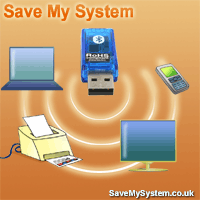If you were among the first users of an internet connection in the 90s, you'll definitely remember the dial up modem. The sound of a modem trying to connect to a phone probably rings in your ears at the very thought of it. The very act of connecting to the Internet used to be such a difficult task.
One would probably try at least five to ten times before you could connect to the Internet. Even after logging in, you could even go and make a cup of tea before a web page could load. And even if the connection speed was decent, just one phone call could cause you to be disconnected from the internet.
But who would have thought then that connecting to the internet would become as simple as just turning on the computer or hand held device! With the introduction of Broadband internet, it has become so simple to connect to the internet.
Broadband access to the Internet, which is shortened to "broadband" is a high speed data rate connection. Dial up connections were limited to 56kbit/sec typically and required the use of a telephone line. Comparatively broadband can deliver two times the speed of dial-up connection without blocking telephone lines.
With regards to telecommunications, broadband refers to a signalling method that includes or handles a relatively wide range of frequencies. These frequencies can be divided into channels or ranges of frequencies. The term is always relative, and usually used within the context. The capacity of a broadband channel for transmitting data is decided by the bandwidth.
ADSL (Asymmetric Digital Subscriber Line) and cable Internet are the standard technology used for broadband. There are new technologies that include VDSL (Very High Speed Digital Subscriber Line) and pushing optical fiber connections to subscribers in cable systems and telephone.
Fiber optic communication is a key player in broadband Internet access. It makes transferring information over long distances more cost effective than copper wire technology.
In areas where broadband cable or DSL is not in use, Wi-Fi is installed for community purposes. Several municipalities have established municipal Wi-Fi networks to provide internet to the entire city. Wi-Fi is used on a smaller scale to facilitate Internet access in offices and even for personal use at home.
Mobile broadband has become more and more popular with the massive inflow of Smartphones into the market. Since most of these smartphones are Wi-Fi enabled, a number of public places like shopping malls allow their customers to access their networks. Cafes and restaurants also offer Wi-Fi at a certain price or for free to its customers.
There are a lot of Service Providers that offer very good plans for Broadband packages. These include plans for Business as well as for home use.
One would probably try at least five to ten times before you could connect to the Internet. Even after logging in, you could even go and make a cup of tea before a web page could load. And even if the connection speed was decent, just one phone call could cause you to be disconnected from the internet.
But who would have thought then that connecting to the internet would become as simple as just turning on the computer or hand held device! With the introduction of Broadband internet, it has become so simple to connect to the internet.
Broadband access to the Internet, which is shortened to "broadband" is a high speed data rate connection. Dial up connections were limited to 56kbit/sec typically and required the use of a telephone line. Comparatively broadband can deliver two times the speed of dial-up connection without blocking telephone lines.
With regards to telecommunications, broadband refers to a signalling method that includes or handles a relatively wide range of frequencies. These frequencies can be divided into channels or ranges of frequencies. The term is always relative, and usually used within the context. The capacity of a broadband channel for transmitting data is decided by the bandwidth.
ADSL (Asymmetric Digital Subscriber Line) and cable Internet are the standard technology used for broadband. There are new technologies that include VDSL (Very High Speed Digital Subscriber Line) and pushing optical fiber connections to subscribers in cable systems and telephone.
Fiber optic communication is a key player in broadband Internet access. It makes transferring information over long distances more cost effective than copper wire technology.
In areas where broadband cable or DSL is not in use, Wi-Fi is installed for community purposes. Several municipalities have established municipal Wi-Fi networks to provide internet to the entire city. Wi-Fi is used on a smaller scale to facilitate Internet access in offices and even for personal use at home.
Mobile broadband has become more and more popular with the massive inflow of Smartphones into the market. Since most of these smartphones are Wi-Fi enabled, a number of public places like shopping malls allow their customers to access their networks. Cafes and restaurants also offer Wi-Fi at a certain price or for free to its customers.
There are a lot of Service Providers that offer very good plans for Broadband packages. These include plans for Business as well as for home use.
About the Author:
Want to know more about Audio Conferenceand Find out more about Video Conference check this link.

No comments:
Post a Comment